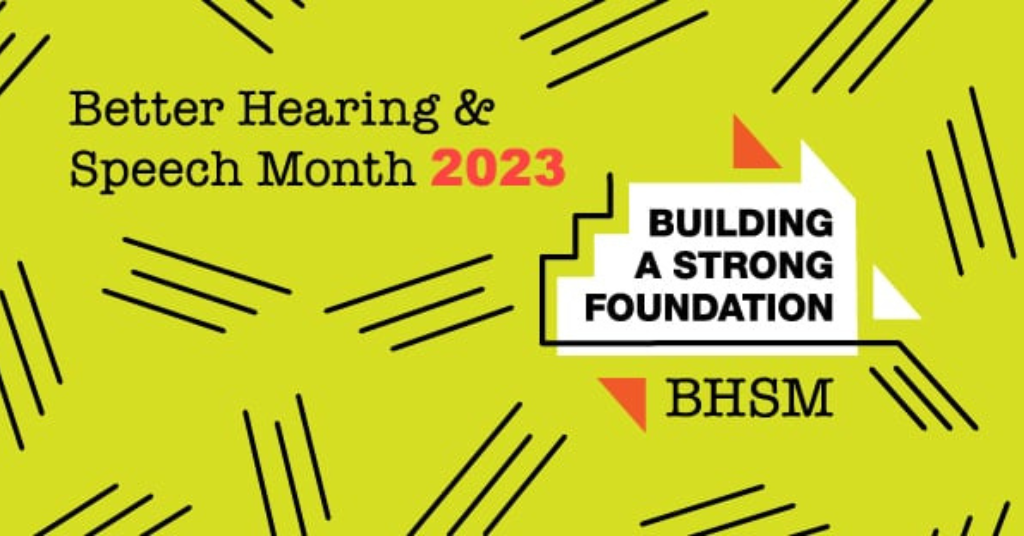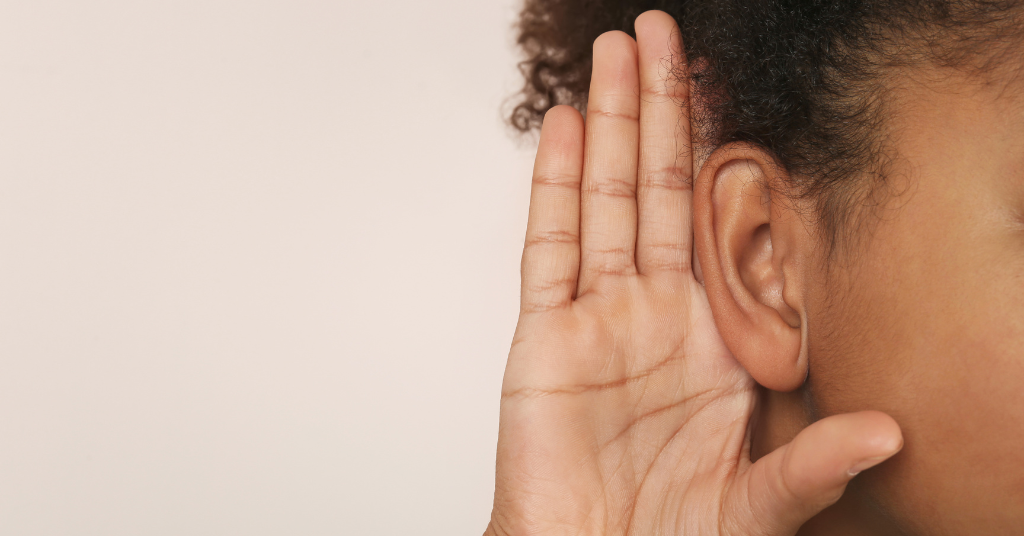
Phonak unveils better hearing aids for speech understanding with Lumity platform
September 16, 2022
Spreading deaf awareness in your community
September 21, 2022Deaf Awareness Week 2022: Building an inclusive community

It’s that time again! September 19-25, 2022 is Deaf Awareness Week. This year’s theme is “Building an inclusive community,” a crucial part of awareness and sense of belonging among people with all levels of hearing loss.
Inclusion
What does it mean to build an inclusive community? Inclusion has various meanings for different people. Some people may associate it with making people feel like they’re a part of something. Others may think of it as not leaving people out or not excluding others. To many in the deaf and hard of hearing community, it’s all the above plus accessibility. The way I describe it is there’s no inclusion without accessibility. What that means is in order for us to feel included, there must be accessibility. Without proper access to communication, it’s difficult for us to feel included.
“…there’s no inclusion without accessibility”
The Center for Disease Control (CDC) has an article on the topic of disability Inclusion and what it means: “Including people with disabilities in everyday activities and encouraging them to have roles similar to their peers who do not have a disability is disability inclusion. This involves more than simply encouraging people; it requires making sure that adequate policies and practices are in effect in a community or organization.”
Hearing Loss and Inclusion
We now have a basic sense of what inclusion can mean. But what specifically does it mean for the deaf and hard of hearing community? Well, that answer is different for every single person with hearing loss. We all have different levels of hearing loss, preferences, tools, and things that work for us personally. Deafness exists on a spectrum. Some of us rely on sign language. Others rely on communication methods like live captioning, lipreading, and hearing assistive technology. Some with hearing loss choose to talk, while others don’t.
Being inclusive means refraining from assumptions such as that all deaf and hard of hearing people are the same. We don’t all sign, nor do we all speak.
How to Build an Inclusive Community
To some, the idea of making communities more accessible and inclusive for people who are deaf and hard of hearing seems like a daunting task. We promise it’s not! Believe it or not, it’s quite simple. Here are some basics suggestions that can make more of a difference than you might think!
Be Patient
We know it can be frustrating not knowing sign language or having to repeat yourself multiple times when we can’t understand you. Keep in mind that we’re just as frustrated. Your patience in these situations helps tremendously. We can work through it if you work with us!
Be Open to Writing
Some of us prefer to use writing as a method of communication, especially when we go into restaurants or human service organizations. Others may choose sign language, transcription apps, or another tool. Taking the time to write something down can be incredibly helpful! Also, providing email and text options, appointment reminders, confirmations, etc. especially in human services and/or workplaces is appreciated.
Have Visuals
If you’re an organization, having visual signs for directions or important information can help us tremendously. It’s even more of a plus if there are signs accessible in Braille for deaf-blind individuals.
Caption Video and Audio Content
Members of the deaf and hard of hearing community heavily rely on captions for any audio and video content. This includes content that may be presented in public places such as airports, train stations, and most other human service agencies, as well as presentations and social media. This is a simple, yet incredibly life-changing feature for the deaf and hard of hearing community to feel included. Many platforms have a captioning feature that’s free and easy to use.
Read more: The importance of captions and how they can improve
Provide Accessible Technology in the Workplace
Many workplaces can be highly verbal or auditory. Many jobs require the use of phones for communication or customer service. Making the workplace an accessible and inclusive place for deaf and hard of hearing individuals can open the doors for further job and employment opportunities. This can be done by providing visual cues like flashing lights for things like fire alarms, doorbells (if applicable), phones, and computers. Caption phones are also useful for equal-access communication.
Some employees with hearing loss put up strategically located mirrors to help them see when people approach. They might also hold meetings in rooms where everyone can be facing one another, with preferably round tables and an interpreter or live CART captioned present if needed. Employing note-taking systems like NoteTaking Express or Otter, which transcribe meetings into real-time text transcriptions is also a common tool. These are just a few examples, as specific needs vary. One of the most important things you can do is ask what we need!
Read more: Hearing loss and workplace discrimination
Have Online Ordering/Scheduling Options
This is something that’s been a game changer for people with hearing loss. Many places such as restaurants and doctors’ offices now have online scheduling/ordering.
Read more: How restaurants can better handle deaf customers
Always Speak to Us Directly and Make Eye Contact
Often when we have interpreters present, people talk to the interpreters in the third person instead of talking to us. Even though we may be using a different form of communication and it might feel like you’re talking to them, we are still the one communicating with you. If we make phone calls through a Relay system, the same concept applies; pretend the Relay operator is not there. It can be very disrespectful and frustrating to us when we don’t feel like you’re speaking to us directly. It’s also extremely important to make sure you’re facing us and not turning your back when speaking. This really helps us to lipread, and use facial expressions to gauge context.
Provide Clear Masks
If your place of business or healthcare facility still requires masks, offering clear masks will make our lives easier. This is especially true when it comes to healthcare, as it allows us to best understand the information being provided.
Read more: What to know about clear medical masks for lip reading
Be Open to Adaptation
As we mentioned earlier, every one of us has very different needs. That means that not all deaf and hard of hearing individuals will rely on these same tips listed here. Sometimes people are afraid that asking what we need might be offensive. However, it’s just the opposite. Asking us directly gives us the opportunity to tell you how we can best work together to create an inclusive community.
Read More: 4 Inclusion tips for Deaf Awareness Week
Awareness
There are a lot of misconceptions in the hearing world about hearing loss. Here are a few things to be aware of and consider to ensure an inclusive community.
We’re Not “Dumb”
Many people unfortunately still uses terms like “deaf and dumb.” This is a phrase that must be eradicated. Deafness has never equaled dumb in any capacity. Many deaf and hard of hearing people live incredibly successful lives. None of us is any less capable or intelligent than hearing people.
Don’t Be Afraid to Talk to Us
Sometimes the hearing community will shy away from us if they see our hearing aids or cochlear implants or see us using sign language. Don’t be afraid to talk to us. Wave, smile, learn a sentence or two in ASL, or write something out if necessary. We love communicating with you and being included in the hearing world.
We’re Not Ignoring You
Sometimes people will say things or try to get our attention from afar while in a noisy environment or when we aren’t looking. If we don’t respond, we’re not being rude or ignoring you; we simply didn’t hear you. You can get our attention by waving, facing us, or tapping our shoulder.
We’re Human
We are no less human than any hearing person, so there’s no need to treat us or see us any differently! We can do anything, except hear. Building inclusive communities starts with all of us. All it takes to lay the foundation is awareness, advocacy, education, and effort! Although there is an entire week dedicated to Deaf Awareness, it doesn’t end there! We are always advocating, educating and spreading awareness about our unique community because we just want to be included.



